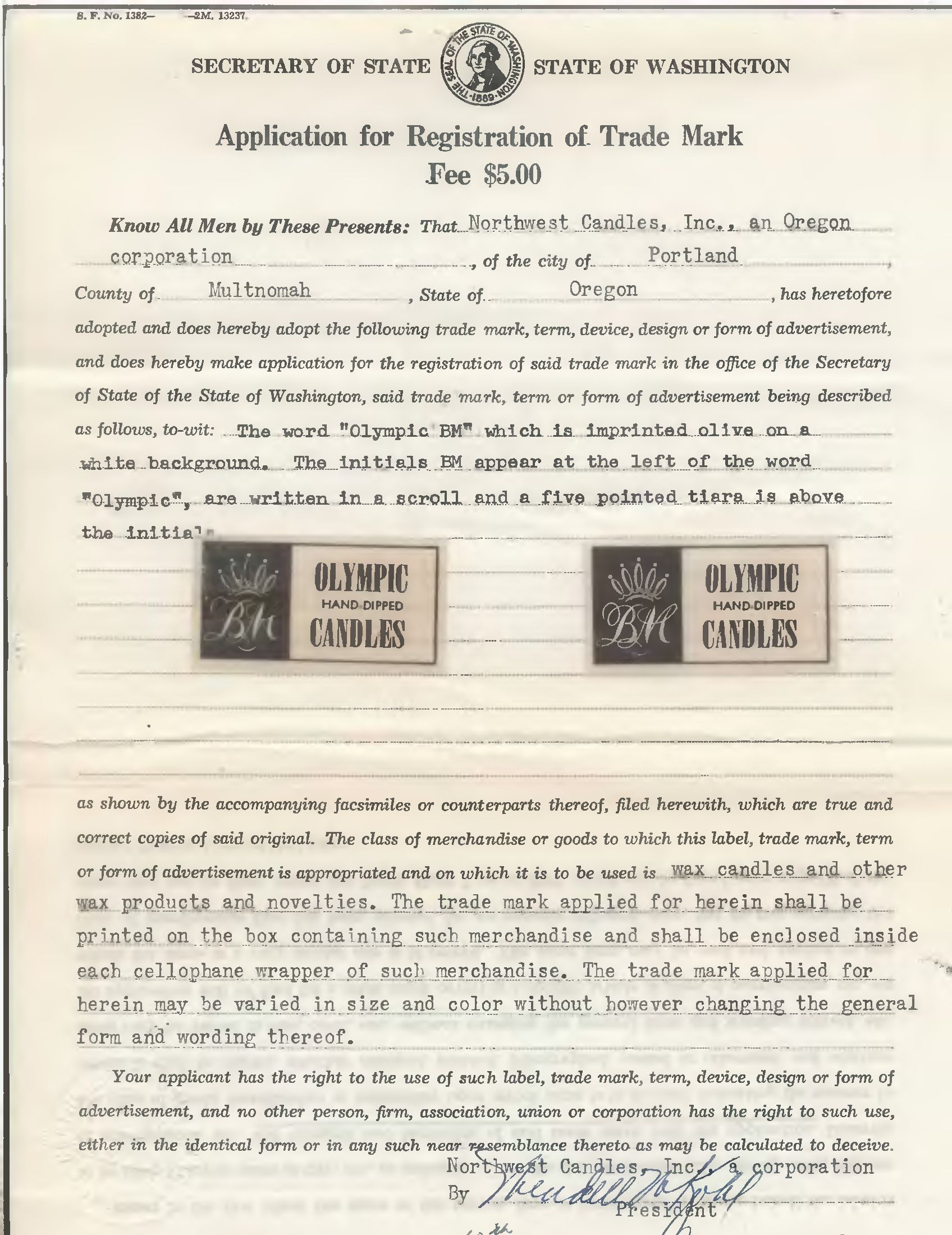Entries in Washington State Trademark Registration (4)
New State Trademark Filings Eliminate Goods and Services Descriptions
The Secretary of State quietly changed an important feature of Washington State trademark filings. They re-did their application form for trademark registrations. And, in doing so, they eliminated the applicant’s description of its branded goods and services.
So now, it’s possible to claim the entirety of a classification. Rather than say “Class 35 - Retail clothing store services,” for example, applicants now are prompted to just identify “Class 35 - Advertising & Business.”
It’s a curious departure from U.S. Patent and Trademark Office practice, which requires applicants to specify the goods and services for which they seek expanded rights. It’s closer to foreign trademark schemes that only recognize rights if a mark is registered. In those registration-based countries — which make up most of the world, but differ from use-based countries like the States — it’s common for applicants to list all imaginable goods and services in an effort to occupy the field for a particular trademark.
I thought this change was strange, so I asked about it. Washington’s trademark office told me it was intended to bring Washington’s filing scheme more in line with the authorizing statute.
In the end, Washington’s trademark statute is the same, so trademark rights presumably are the same. Trademark owners are protected against a “likelihood of confusion” with later-adopted marks, and a state registration certificate gives the presumption of trademark rights statewide. But do these rights now encompass the entirety of a class if that’s what’s listed on the registration certificate? Or are they limited to the branded goods and services the registrant actually provides in commerce? It’s not clear.
For now, applicants will likely be motivated to claim the entirety of a class (or multiple classes) if they’re not forced to limit their claim to the particular goods and services they sell. After all, more seems better than less. When enforcing one’s rights, however, I imagine courts will pare back overly broad claims to reflect how the mark is actually used.
It’s just a little curious the State has broken with the USPTO’s identification requirements in issuing trademark registrations in favor of those more frequently seen abroad. The uncertainty the new scheme introduces seems like a shame.
Washington State Trademarks Are Now Searchable
The Washington Secretary of State’s database of trademark filings is now searchable (accessible here, at the bottom of the page).
This is a big improvement. Before, searching state records was a hit-and-miss (and mostly miss) affair with the Washington State Digital Archives. Or it meant spending time on the phone. Or paying to access third-party databases, which was a bit galling, since trademark filings are public.
Be galled no more. Users can now search Washington trademark filings by trademark number, owner name, trademark word elements, or Uniform Business Identifier (UBI) number. Once a filing is found, you can click a hyperlink and see PDFs of the as-filed documents. The interface is publicly-available, and it’s free.
That’s not to say it’s perfect. Those are the only searches available. You can’t search by attorney, or goods and services, or use Boolean operators. Those features would be nice, but they’re icing on the cake. It would also help to know the currency of the database, i.e., the date through which the information is accurate. However, this is such a great leap forward, I’m not complaining.
What’s important is the database is meaningfully populated with relevant data. It’s a useful tool that trademark owners should search before making their own filings in Washington.
Use Your State Trademark Registration to Enforce Your Rights Online
As previously discussed (here), I believe that state trademark registrations have their place in forming a smart trademark protection strategy.
Here’s another reason why they can be useful: enforcing your rights with online portals like Amazon, eBay, and Google. Generally, these providers only act on complaints about counterfeiting or trademark infringement if the complaining party can establish its superior rights by supplying a registration number. At least with Amazon (with whom I’ve recently dealt), this includes state trademark registrations.
Assuming state registrations continue to do the trick (and are similarly acted on by eBay, Google, and other providers), they can be an attractive option for a trademark owner if its goal is to stop online infringement. They’re quick (in Washington, you can get a registration certificate within a week or two), they’re cheap ($105 in filing fees in Washington, including expedited processing), and they’re almost automatically granted.
If you want to maximize your trademark rights, it’s no substitute for a federal registration. But if you only do business locally, or want a quick credential to leverage with online providers, a state registration can be an option to consider.
Search Washington Trademark Filings for Free
 A sample application for statewide trademark registration.
A sample application for statewide trademark registration.
Users can now search filings from 1888 to 2011 for free
It’s now possible to search Washington trademark registrations for free.
The Washington Secretary of State’s digital archives have added trademark records to its searchable online database.
Start with the digital archives home page. Select “Trademark Records” from the dropdown menu under the “Search by Keyword” or “Detailed Search” options, enter the search criteria, and click the “Search” button.
The “Detailed Search” option enables searching by keyword, registration number, owner name, document type (amendment, application, assignment, renewal, and reservation), and range of filing dates.
Results display the trademark number, owner’s name, document type, received date, and even a copy of the application, specimens of use, and registration certificate.
The site states the database includes “active and inactive trademark records filed with the Secretary of State’s Office, Corporations Division from 1888 to 2011.”
This is a pretty awesome tool that previously was available only through third-party vendors.
Thanks to the State of Washington for making this available. And thanks to Shannon Whitmore for letting me in on the secret!